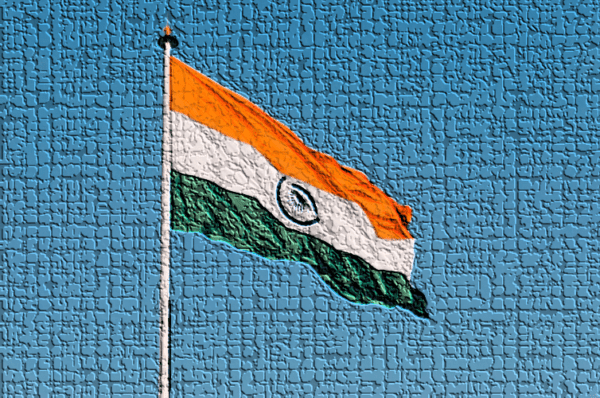
In the Indian state of Uttar Pradesh (UP), a young Dalit woman was raped and brutally beaten by four men hailing from the Thakur caste on September 14, 2020 (Sharma & Siddiqui, 2020; Vadana, 2020). The nineteen-year-old was a member of India’s lowest caste and the attackers, all from the Hathras district, were upper-caste (Fernando, 2020). The victim later died of her injuries and it took the police weeks after the initial assault to arrest all four men and charge them in the violent attack (Vadana, 2020). The government of UP has since established an investigation both into the attack and into the poor handling of the case by UP police (Jaiswal, 2020). After a second young Dalit woman was sexually assaulted and killed in UP, “nationwide protests have erupted” (Fernando, 2020). But few news sources are providing robust coverage of the protests, their scale, or their caste connections (Sharma & Siddiqui, 2020).
India averaged 87 rape cases a day in 2019, a disproportionate number of these perpetrated against lower-caste women (Vadana, 2020). There is no ethical debate to be had about the sexual violence itself; it is undeniably wrong and there is a moral obligation to fight it. Likewise, caste-based violence is unacceptable and should be eliminated. What is less clear is the place of the media in advancing those goals. How do different ethical perspectives weigh in on whether and to what extent journalists should discuss the role of caste in both the violence and political protests that follow?
The caste system in India “categorises Hindus from birth, and their caste defines their place in society” (Fernando, 2020). Outside of the hierarchy of castes are the so-called “untouchables,” a group pejoratively distinguished by the religiously polluting nature of their contact or mere presence. The ancient and reprehensible system of a graded ordering of worth based upon family birth has been legally abolished by the Indian constitution orchestrated by the “untouchable” political activist, Bhimrao Ambedkar. Through his efforts, “India’s constitution outlaws caste-discrimination and enshrines affirmative action laws designed to make up for centuries of marginalization of Dalits, who now number more than 200 million” (Trivedi et al., 2020). But legal prohibitions do not automatically prevent caste from playing a role in social, political, and economic structuring. For example, New Delhi supreme court lawyer Kiruba Munusamy explains “most of the authority and state machinery support the dominant castes for political benefits” upheld by police who “are also not free of caste bias” (Trivedi et al., 2020). Economically, “you can go to almost any village in India to find that different caste groups live in geographically separate bastis” (Vij, 2020).
From one perspective, covering these horrific cases in with an emphasis on caste is vital because it is the only way to accurately reflect material reality. The caste system, per Professor Devleena Ghosh, persists and is tied to a trend where “the violence against women in general, and against Dalit women in particular, has risen and has been committed with impunity by higher-caste men” (Fernando, 2020). The relative social standing of the attacker and attacked alters the choice to commit violence, the nature of the assault, and official responses. Thus, it could be argued that not highlighting the caste differences hides the impetus for the attack—social discrimination and prejudice grounded in the caste hierarchy.
At the same time, some might argue that a news focus on caste while reporting perpetuates the abolished, but still thriving, caste hierarchy. Against this point, others would maintain that to ignore the role of social rank omits a history of violence. In particular, the family of the victim mentioned earlier had long been harassed by Thakur members of the village (Vadana, 2020). Yet, it is unclear if it is possible to include these histories without reinforcing the caste system. Names are themselves powerful and continuing to refer to Indian citizens by caste—as opposed to low SES, middle-class, or affluent, etc.—could be contributing to the difficulty of shaking the now outlawed system. Professor Ghosh is skeptical of speedy improvement “because people in power have a reason to have those relationships exist, and they will do everything they can to keep those relationships going,” not just in India, she notes, but in the United States, Australia, and across Europe (Fernando, 2020). Some could argue, the language of caste is one way these power dynamics are preserved.
Another critique of media coverage is grounded in a failure to hold elites to account. There is little acknowledgment that members of the Thakur caste form “an important political vote bank in Uttar Pradesh” and it is the caste to which the state’s chief minister belongs (Vadana, 2020). Vadana (2020) also points out that very few high-ranking Indian officials have commented on the case, including Prime Minister Narendra Modi and Chief Minister Yogi Adityanath of UP. Two Dalit MPs, Kirit Solanki and Hans Raj Hans, have spoken out against the actions of the state government and police force concerning the case (Hathras, 2020). However, neither, despite being members of the same caste as the victim, are reported to have spoken about caste as an element of the attack. Caste potentially informs the ways both journalists and officials respond to violence. News organizations, in a watchdog role, might be ethically obligated not to follow the lead of political elites in talking about the attack, but instead to call them out for a failure to address systemic caste-based violence.
Dalit activist Ram Kumar argues the attack is meant “to show down the whole [Dalit] community … what’s your worth?” (Vij, 2020). But not everyone agrees. Pallavi Ghosh, a prominent journalist, tweeted urging others to “not reduce the heinous crime against the hathras [sic] victim as a crime against a dalit [sic] – it’s a reflection of how mean and cruel we have become – we have failed the women of our country yet again” (Ghosh, 2020). Tension arises between those wanting the issue covered as a caste-based attack and those seeking greater discussion of gender-based violence. Shivam Vij (2020) highlights a key ethical debate in coverage of this sexual assault, the controversy over whether to call it “a Dalit atrocity” or to leave caste in the background, perhaps for a focus on gender-based atrocities (Vij, 2020).
If the problem, per Kumar, is indeed that “Dalit women are often raped because upper-caste men think they have the right to rape them” (Vij, 2020), press covering such violence must grapple with the most ethical ways to cover the caste roots of the attack without reifying disparities in the implicit worth of different groups. Namely, how do reporters cover caste-based violence without perpetuating the caste system that engenders it, or without ignoring other concerns such as gender-based violence?
Discussion Questions:
- What ethical considerations are important when reporting on violence that happens across economic and social groups?
- Is it ethical to continue to use the language of caste (e.g. Dalit, Thakur) in reporting after the system has been outlawed? Do the terms concretize individuals and groups in pernicious hierarchy, or can they be used to dismantle such a system?
- Does the press have an ethical obligation to point out a lack of response from elites when covering caste- and gender-based violence?
- How should the press handle atrocities that involve parties that want to describe the event with different emphases, such as caste-based and gender-based accounts of these horrific sexual assaults?
Further Information:
Gavin Fernando, “Who are India’s Dalits, and why are they particularly vulnerable to gendered sexual violence?” SBS News, October 2, 2020. Available at: https://www.sbs.com.au/news/who-are-india-s-dalits-and-why-are-they-particularly-vulnerable-to-gendered-sexual-violence
Pallavi Ghosh, “Lets not reduce.” Twitter (@_pallavighosh), September 29, 2020. Available at: https://twitter.com/_pallavighosh/status/1310809462387531776
Anuja Jaiswal, “SIT formed to probe Hathras gang-rape.” Times of India, October 1, 2020. Available at: https://timesofindia.indiatimes.com/city/agra/sit-formed-to-probe-hathras-gang-rape/articleshow/78413323.cms
Press Trust of India (PTI), “Hathras case: UP police should have been more sensitive, says BJP MP Kirit Solanki.” Times of India, October 1, 2020. Available at: https://timesofindia.indiatimes.com/india/hathras-case-up-police-should-have-been-more-sensitive-says-bjp-mp-kirit-solanki/articleshow/78430782.cms
Saurabh Sharma & Danish Siddiqui, “Protests rumble in India over alleged gang-rape of a young woman.” Reuters, October 2, 2020. Available at: https://www.reuters.com/article/us-india-rape-protests/protests-rumble-in-india-over-alleged-gang-rape-of-young-woman-idUSKBN26N22K
Upmanyu Trivedi, Archana Chaudhary & Sudhi Ranjan Sen, “Protests erupt in India following woman’s death in rape case.” Bloomberg, October 1, 2020. Available at: https://www.bloomberg.com/news/articles/2020-10-01/protests-erupt-in-india-following-women-s-death-in-brutal-rape
Kamini Vadana, “No country for Dalit women.” Madras Courier, October 1, 2020. Available at: https://madrascourier.com/opinion/no-country-for-dalit-women/
Shivam Vij, “India’s Dalit women often face sexual violence because of, yes, their caste.” Dawn, October 1, 2020. Available at: https://www.dawn.com/news/1582656/indias-dalit-women-often-face-sexual-violence-because-of-yes-their-caste
Authors:
Dakota Park-Ozee & Scott R. Stroud Ph.D.
Media Ethics Initiative
Center for Media Engagement
University of Texas at Austin
December 5, 2020
Image: Naveed Ahmed / Unsplash / Modified
This case was produced by the Center for Media Engagement with support from the South Asia Institute. It can be used in unmodified PDF form without permission for classroom or educational uses. For use in publications such as textbooks, readers, and other works, please contact the Center for Media Engagement.
Ethics Case Study © 2020 by Center for Media Engagement is licensed under CC BY-NC-SA 4.0



